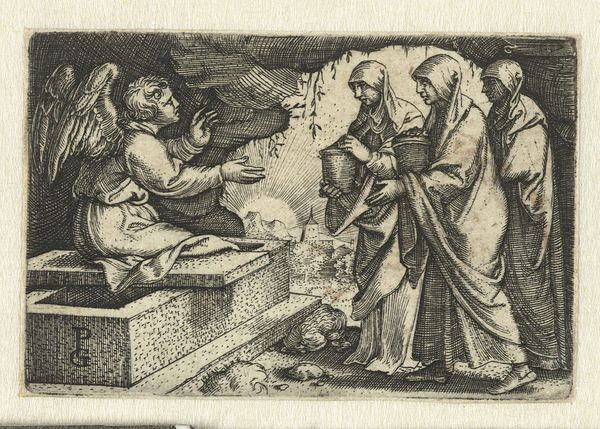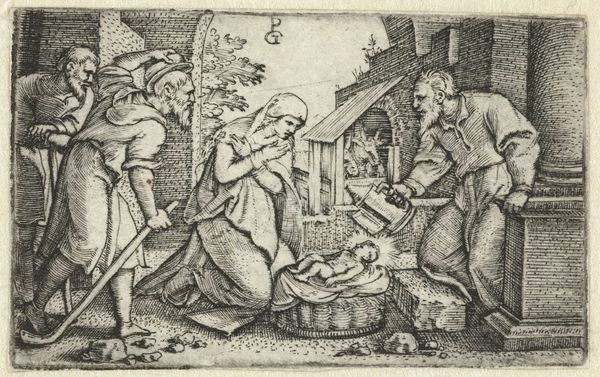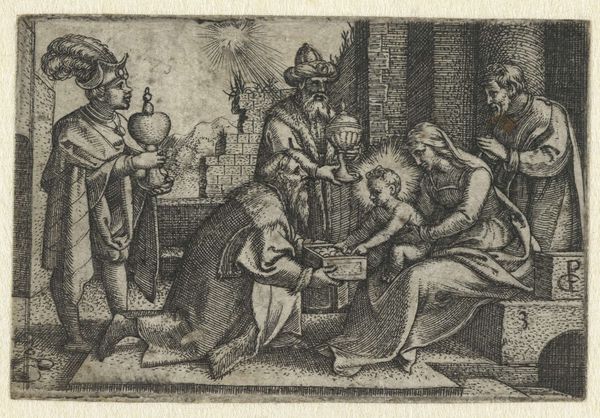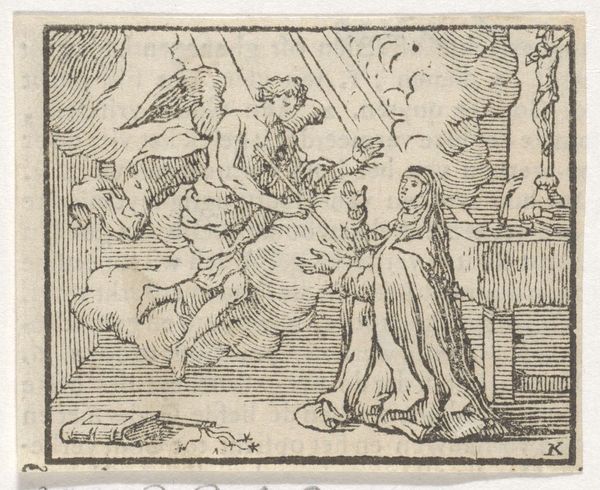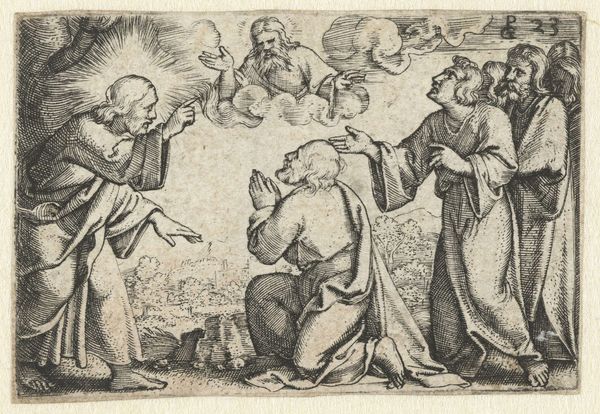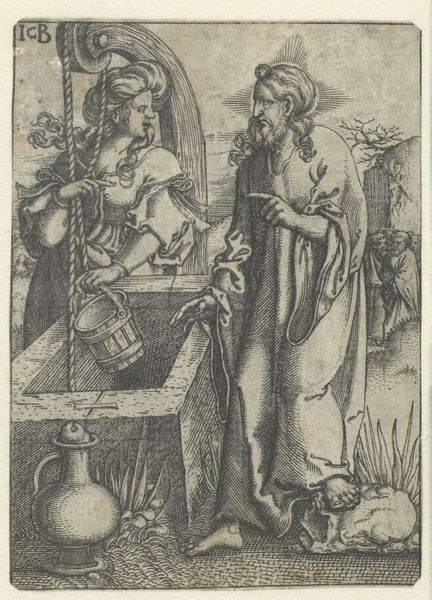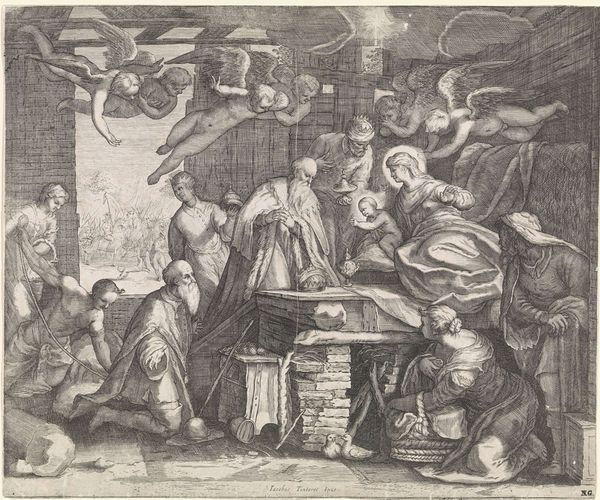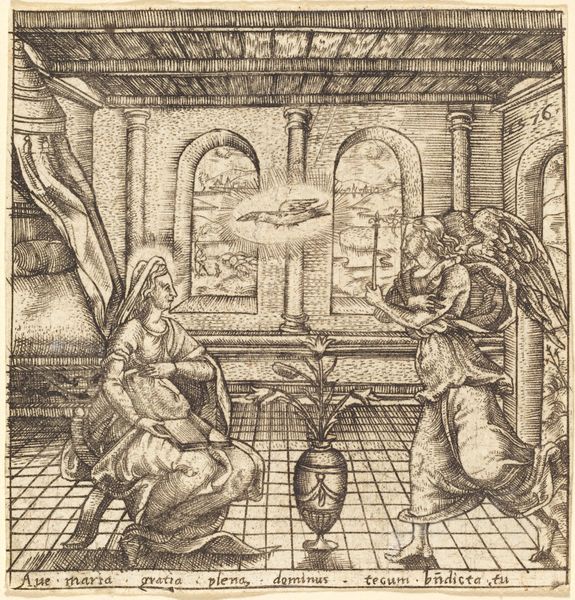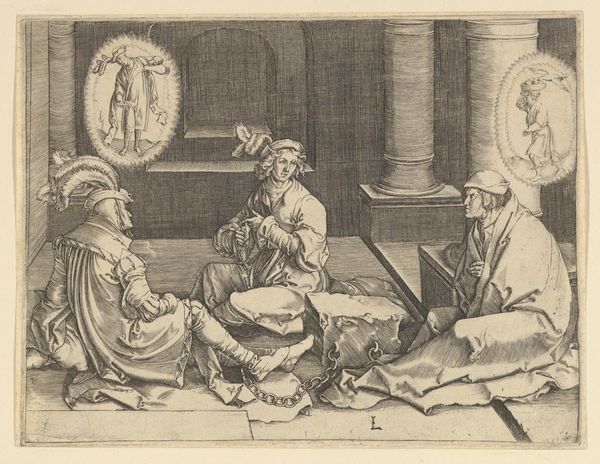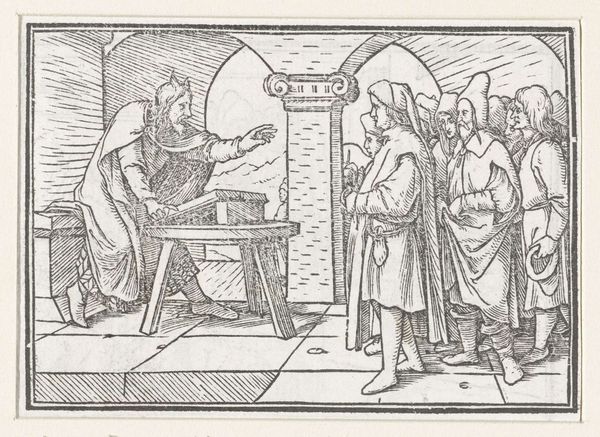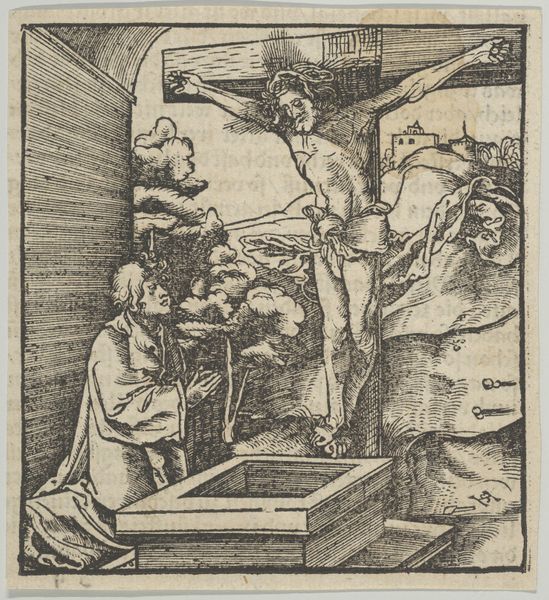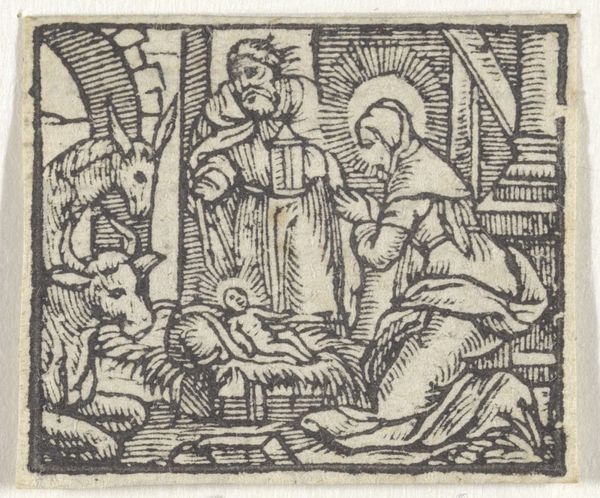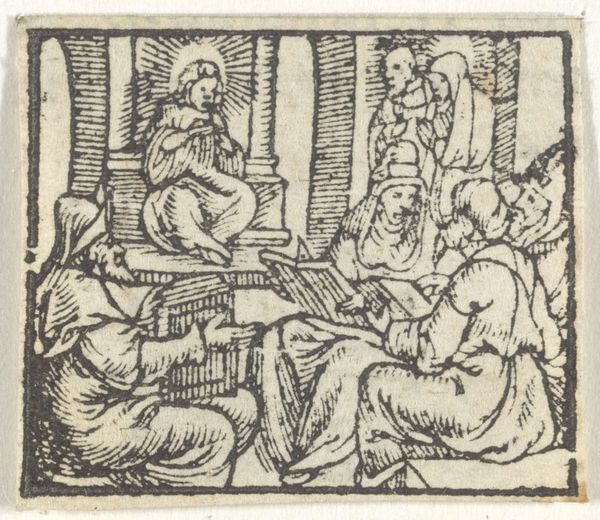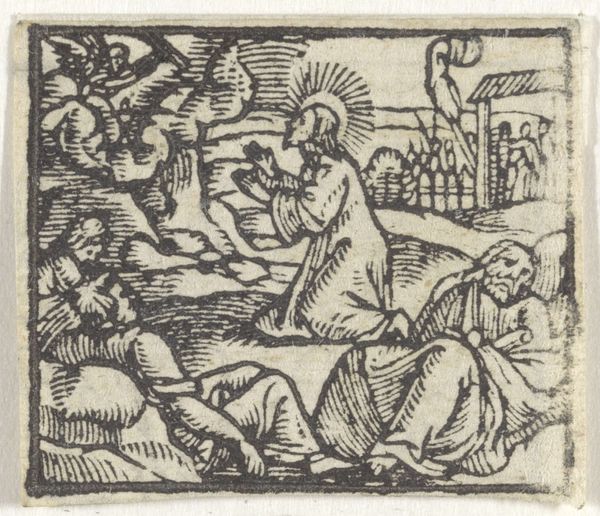
print, engraving
# print
#
figuration
#
line
#
history-painting
#
northern-renaissance
#
engraving
Dimensions: height 40 mm, width 60 mm
Copyright: Rijks Museum: Open Domain
Curator: Looking at this engraving by Georg Pencz, titled "Three Marys at the Empty Tomb", created around 1534–1535, what's your immediate impression? Editor: A study in contrasts. The linear detail is quite meticulous, creating a somewhat somber mood. There's a stillness, yet an urgency in the figures' gestures. Curator: Precisely. Pencz was a Northern Renaissance artist, so he’s working within established iconographic traditions for this subject, which of course depicts the biblical scene of the women discovering the empty tomb of Jesus. Notice the angel sitting atop the tomb. Editor: Yes, the angel's pose, with his outstretched arms, forms a striking visual and compositional counterpoint to the cluster of women on the right, all flowing robes and bowed heads. What would you say that visual counterpoint conveys? Curator: It's an invitation and revelation! The angel is both announcing and demonstrating the miracle. The women, bearing their containers of ointment, embody grief, the expectation of tending to a dead body. It is a story about the collision between the quotidian, the ordinary, with divine irruption. The cultural memory of that pivotal moment. Editor: You see that drama really built into the form itself. The line work and engraving technique also stand out. See how varied the line is in different areas, a semiotic articulation, we can say, using structuralist concepts. It's heavier in the shadows, more delicate on the faces, modulating tone while shaping space. Curator: Definitely. It’s a skilled technique which conveys emotional complexity. Even the three Marys offer a variation on grief—each figure possesses an inner world that we can infer, projecting feelings of sorrow onto each face. And their very presence repeats the historical event, embedding its cultural permanence. Editor: It speaks to how an artwork from the Northern Renaissance can utilize even limited means—a small engraving!—to represent these emotionally and theologically loaded stories with nuanced visual power. Curator: It’s an affirmation that these ancient stories never truly remain in the past. Editor: Exactly, it becomes a complex visual narrative and affective object.
Comments
No comments
Be the first to comment and join the conversation on the ultimate creative platform.
